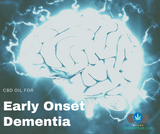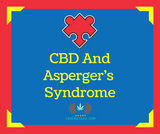When you’re in pain, you find yourself trying all different types of treatments to find something that works for you. From prescription medications to holistic remedies, everyone has their own unique needs meaning they need their own unique treatment plan. While some methods can be successful alone, there are ways to help advance your health that also enhance treatments. These are called complementary treatments and therapies and are not used to cure diseases, but instead help encourage your current therapy or treatment to work more effectively.
Reflexology
Reflexology is a study on how one part of the human body relates to another part of the body. Practitioners rely on a reflex map of your hands and feet that connect certain spots to organs and other body parts. There is evidence that applying pressure and massaging certain spots can help energize and rejuvenate other parts of the body.
Your body is covered in ten reflex zones with five on each side. Each zone is represented by a point on your foot or hand. A reflexologist uses these points to help regulate your body and make it more efficient. But how does this even work?
How Does Reflexology Work?
There are several theories as to how reflexology works, but the truth is, we aren’t sure how yet. We do have scientific evidence that it does work, we just don’t know how.
One of the main theories began in the 1890s, showing a neurological relationship between the skin and internal organs. According to this theory, the pressure on the reflexology points sends a calming signal through the peripheral nervous system to the central nervous system. This signal helps to relieve tension throughout the body and brings organs to an optimal level of functioning.
Other theories of reflexology that may explain its therapeutic effects:
- By reducing stress and tension, reduces brain pain signals caused by emotional distress
- Massage improves blood circulation, helping to relieve cardiovascular symptoms
- Reflexology may stimulate the immune system through regulation
- Reflexology may help detox the body by increasing the flow of certain fluids and delivering more oxygen and nutrients
Reflexology is not used to diagnose or cure a disease. There are no scientific claims of that that are accurate or reliable. Reflexologists that you work with are not medically trained professionals like a general practitioner. Reflexology is a complementary treatment, which means you use it in addition to current treatment and you do not use it to replace current treatment. But if it is just an additional treatment, can it really be that valuable? Science says, yes.
What Does Research Have To Say?
While reflexology has been used all over the world for years, it is only recently that scientists have compiled enough evidence to make any statements on the validity of the treatment. While studies are still limited, there is still enough evidence to make this a valid option when looking for ways to make your life easier to live. Some of the ways that they found reflexology was effective were helping with symptoms of the following:
- Low Back Pain
- Migraines and Headaches
- Stroke
- Stress Reduction
- Multiple Sclerosis
- Peripheral Neuropathy in Diabetes
- Asthma
Some have even claimed that reflexology can be as effective as painkillers, which is a great alternative for those who don’t want to risk addiction or overdose.
Hydrotherapy

Hydrotherapy is another ancient therapy treatment that science is catching up to. Research has found that submerging yourself into the water and manipulating the temperature can have beneficial effects to your body. Studies suggest that using hydrotherapy can help with problems in several different systems in your body.
How Does Hydrotherapy Work?
One of the main ways that hydrotherapy works is through buoyancy. By being fully submerged in water, you are taking the stress and weight off of your muscles and joints. Studies have suggested this is why taking a bath is more efficient than taking a shower when trying to practice at-home hydrotherapy. Studies have shown that using both cold and hot water can have beneficial effects on your body.
Using cold water at 57 ̊ F, researchers have found that hydrotherapy can:
- Increase metabolic rate
- Increase heart rate
- Increased blood pressure
- Increased dopamine
- Decrease cortisol concentration
Water at 68 ̊ F showed in studies to:
- Decrease in heart rate
- Decrease in blood pressure
- Increase dopamine
- Increase metabolic rate
- Decreased cortisol concentration
Water at 89 ̊ F showed in studies to:
- Lower heart rate
- Lower blood pressure
- Lowered cortisol concentration
Hydrotherapy stimulates your body by taking advantage of the reaction to hot or cold-water submersion. By manipulating the way that your body produces chemicals, using hydrotherapy can help with your immune system, cardiovascular system, and can reduce your sensitivity to pain. Warm water can relax your muscles and your mind while cold water acts as a stimulant. Taking a hot bath followed by a cold, short shower can also help relax your body and stimulate your mind.
Acupuncture
Acupuncture is when practitioners stimulate certain points on the body usually by putting a needle in your skin. It might sound a bit scary at first, but it can be very therapeutic. Studies have shown that using acupuncture as a complementary treatment can help people who deal which chronic pain, specifically in the lower back, neck, knees, and migraines.
How Does Acupuncture Work?
Acupuncture, like other ancient remedies, is just now starting to be understood. Like other therapies, we have evidence that it works we just aren’t sure how. Researchers have come up with a few theories as to how acupuncture works.
- Acupuncture may work through neurohormonal pathways, stimulating the nerves. The nerve sends signals to the brain, and then the brain releases neural hormones making the patient feel euphoric and increase the pain threshold.
- Acupuncture may reduce pro-inflammatory markers in the body suggesting that it can decrease inflammation and pain.
- Acupuncture may stimulate the brain to secrete some nerve growth factor, helping nerves regenerate.

Aromatherapy
Aromatherapy is using essential oils to find relief. You can use on your skin, or you can just breathe it in, both have been found in studies to be successful in mental and physical relief. Not every essential oil is the same, so be sure to check this guide on beneficial essential oils to know what exactly you are looking for.
How Does Aromatherapy Work?
There are three different ways to benefit from aromatherapy — Smelling, absorption, and skin absorption.
When you smell the aromas of essential oils, it can trigger an emotional or physical response. When the aromatic molecules travel to the top of your nose, they come in contact with nerve cells called olfactory cells. The cells have tiny hairs that recognize a specific aroma through that is specific to each hair. This produces nerve impulses that travel to the limbic system which leads scientists to believe that it can cause changes by altering brain chemistry.
When you inhale the aromatherapy, not just smelling it but breathing it in, the molecules are absorbed from within and can be especially effective in the raspatory system because of the antimicrobial properties. If you have pain from sinuses, throat pain, or chest pain, aromatherapy through inhalation may be able to help in tandem with other treatments.
For muscle and joint pain, using aromatherapy through massage may be able to help. Because the molecules in essential oils are so small, they can penetrate through the skin and be absorbed into your bloodstream giving them access to your entire body. This may be able to help with inflammation, pain, and help with any toxic buildup in your body.
CBD Oil

CBD oil is unique because it can be a complementary treatment or as a replacement treatment. CBD oil can replace certain medications or taking it can help make your treatment plan more effective. CBD oil can be used topically, inhaled, or taken orally.
How Does CBD Oil Work?
CBD oil has shown in studies to help reduce your sensitivity to pain by elevating endocannabinoids in your body. The endocannabinoid, anandamide, binds to the CB1 receptor which is in control of your neurological system. By elevating anandamide, it enhances its effect when it binds to the CB1 receptor, helping to mediate your mood, sleep cycle, appetite, and sensitivity to pain.
For internal pain, using CBD orally or through inhalation can be very effective. For localized pain that you can reach with a topical, using CBD salves or lotions can help make the pain less severe. If you are taking any medication, be sure to talk to your doctor before taking CBD because it can interfere with certain medications metabolized by the P450 enzyme.















